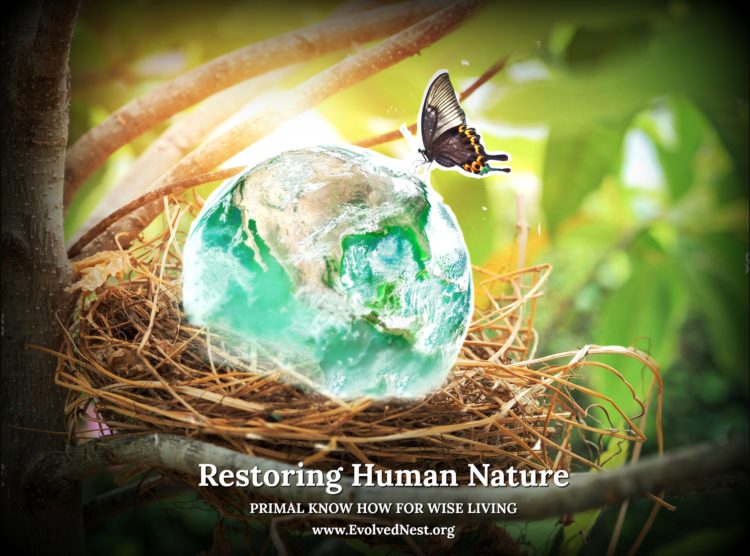Children grow through play at every age.
Children’s play is an essential ingredient for growing abilities of all kinds—cognitive, social, emotional, and executive (e.g., self-control of emotion, action). When children feel safe and well, they will play.
Social play is about excitement and dealing with the unexpected, controlling aggression and being responsive to one’s play partner. And social play fosters happiness.
Babies are ready to play socially from birth, expecting a companionship care that helps them grow optimally. But how do we play with a baby?
LAY THE Groundwork
Responsiveness

Learn responsiveness to the baby’s cues. This is always important for positive child development and good outcomes. And responsiveness is key to good play. It is something the child develops with peer play because a peer will stop playing if the playmate is insensitive.
A good way to learn a baby’s cues is to connect with them skin to skin—holding and carrying baby on your chest. Ideally, baby’s experiences with skin-to-skin started out on day one but if not, you can still practice it.
Responsiveness means paying attention to when a baby does or does not want to play, and when baby wants to stop interacting (looking away, getting fussy). More instruction here from WebMD.
Create a safe play space
Create a completely safe space for baby (see here and here). Then when they are in the mood (awake and alert) you can give them time alone there—very briefly at first—with an interesting object to reach for.
In creating a space, make sure to pay attention to developmental stage of the child. Before a baby can move, they don’t need much space. Once a baby starts to move, they need more room than a playpen provides. Babies might need barriers to feel safe in a big room.
Social Play
The best play “object” for a baby is another person, usually the caregiver. Babies want/need to have face-to-face time. This may be all a young baby is interested in when they are awake.
In Arms
Throughout young childhood, children benefit from being in arms—being carried, rocked, held. Babies expect this virtually 24/7. Positive touch that keeps baby optimally aroused grows body and brain properly.
- Hold baby in your arms and dance to music of different kinds.
- Carry baby around so they can interact with whomever you meet and whatever you are.
Partner Games

As vision improves, a baby will be able to track things farther away than the distance between a mother’s eyes and baby at a mother’s breast. So there are games you can play when you face baby. The most famous interactive game may be Peek-a-boo—hiding behind your hands or an object and popping out unexpectedly. It usually brings a smile.
Song games
There are many song games you can play with a baby next to you on the floor or sofa or in your arms. Adjust movements for what the baby is developmentally ready for. For young babies, take the baby’s arms or legs in your hands and make movements to go with the song. For older young children, let them try the movements themselves. Here are examples.
- School bus (See here for playing school bus with a baby.)
- Roly poly
- More suggestions from parenting sites here, here and here.
Nursery rhymes. Nursery rhymes are loved by children and help them learn the rhythms of their language.
Finger plays. Finger plays are loved by young children and help them coordinate their limbs and speech. One of the most famous “toe plays” is “This little piggy.”
Playing with Objects
Baby will grow into wanting more and more free-play time—such as in a playpen or crib in a quiet alert state. At first, in these few minutes alone, babies can discover how their hands work. Once they have control of their hands, an object can be provided, such as a cloth napkin.
Babies learn threw gumming, tasting, banging, waving, dropping and picking up objects. So, use real-world objects whenever you can. And let the baby explore one or two at a time.
It is best not to use plastic objects because young children put things in their mouths to test out their properties and plastic ingredients can get absorbed.
- Wood (without splinters)
- Cloth (e.g., napkin, washcloth)
- Rubber
- Metal (make sure there is no lead, as in many keys)
- Toys made of wood or (untreated) cloth
- Paper (See video on baby laughing at paper tearing.)
One more thing: The importance of uninterrupted play
It is important to let children become absorbed in their play, which helps them develop attention, focus and patience. Play is how they develop self-confidence. When challenges come up, let the child try to solve them.
Let the child have uninterrupted times for play. Let a baby have uninterrupted time too when she is in the mood and intensely focused on something.
For more ideas for playing with babies and growing their best selves, see these references:
- Gerber, Magda. Your self-confident baby: How to encourage your child’s natural abilities-from the very start. New York: Wiley, 1998.
- Hammond, Ruth Anne (2009). Respecting babies: A new look at Magda Gerber’s RIE Approach. Washington, D.C.: Zero to Three.
- Solomon, Deborah Carlisle (2013). Baby knows best: Raising a confident and resourceful child, the RIE Way. New York: Little, Brown and Co.
- Music Time: 55 Children’s Classics for Parents and Grandparents.
- Additional audio and written materials from Resources for Infant Educarers (RIE)
Featured Photo Shutterstock/Monkey Business Images

